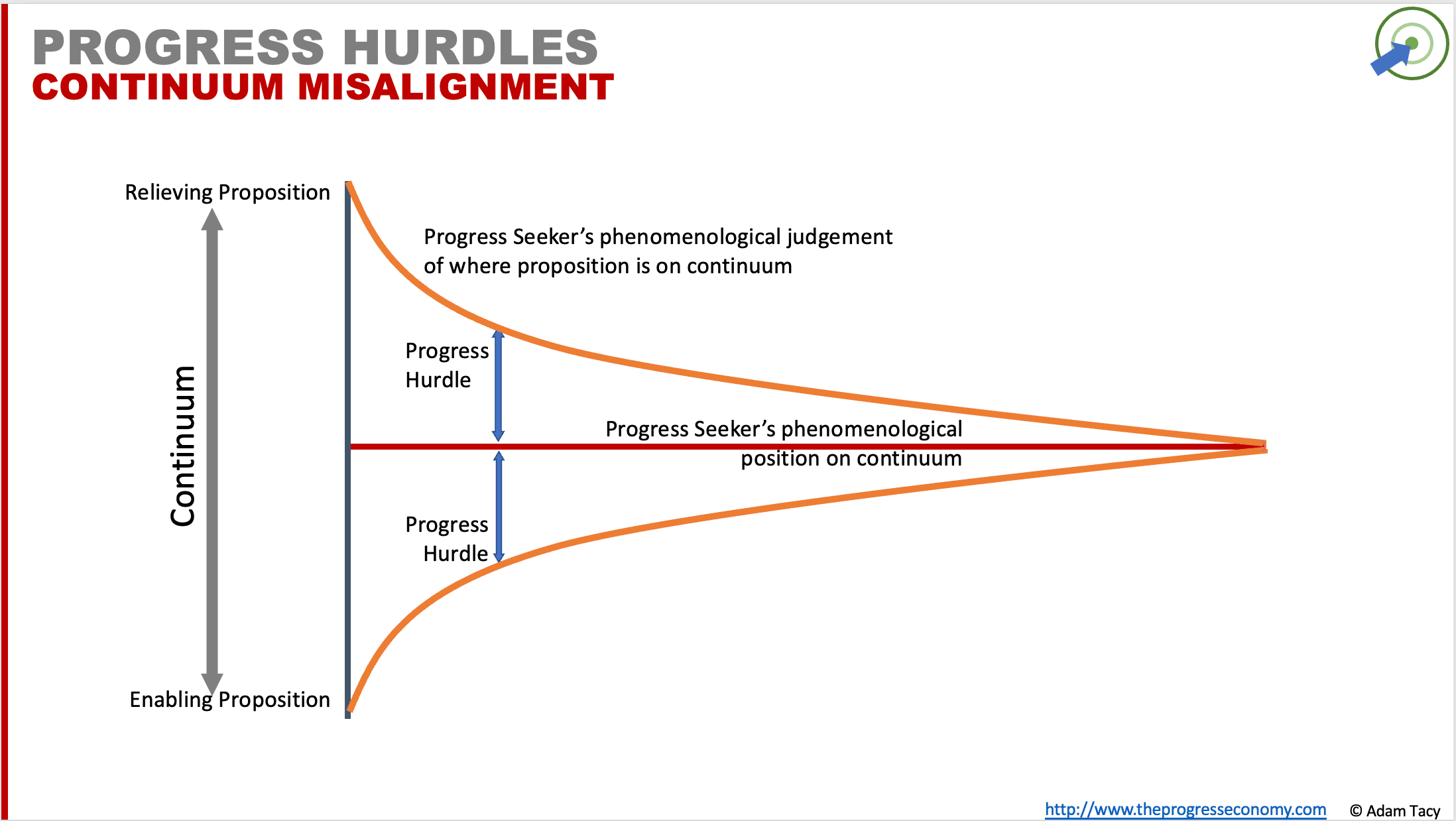What we’re thinking
We know propositions sit on the progress proposition continuum – between enabling and relieving propositions. A seeker also takes a position for every progress attempt.
The further apart those two positions are, the greater the misalignment on the continuum progress hurdle.
A seeker looking for a fully relieving proposition will perceive a fully enabling proposition as having a high barrier to progress.
Editing below here
Our next hurdle concerns itself with the progress continuum. That tells us all propositions fit somewhere between an enabling and a relieving service. The differentiator being who drives the activities. Towards the relieving end it is the helper driving activities. Whereas towards the enabling end it is the seeker.
Explore proposal continuum misalignment progress hurdle >>

Why is this important? Well, imagine you, as a seeker, prefer a relieving service to help you make some progress. When you look at a proposition and see it is an enabling proposition, then you encounter a misalignment on the continuum progress hurdle. And the height of that hurdle relates to how far apart the proposition and your wishes are.
As always don’t forget, this is not a barrier, it is a hurdle. You might still decide to engage. Or you might look at other propositions with a lower hurdle.
And the reason why this is a hurdle is because positioning on the continuum often reflects non-functional progress sought. An enabling progression, for example, favours seeking self-actualisation. Or being able to make progress when they want to. But it comes with a higher reliance on the seeker being skilled.
Whereas an offering closer to the relieving proposition end lowers the skill level needed of seeker. And reduces risk of failure. But it doesn’t help a seeker fulfil a sense of self-achievement, so it may be frustrating.
Bettencourt, Vargo & Lush (2014), they note:
While the customer always participates in value creation, the customer can have a more or less active role in the service provision itself….
…thus, in matching its resources and capabilities, a company must decide where on a continuum of “enabling” to “relieving” service it will be because this impacts the service role of the customer.”
Bettencourt, Lusch, and Vargo. (2014) “A Service Lens on Value Creation”

Let’s progress together through discussion…